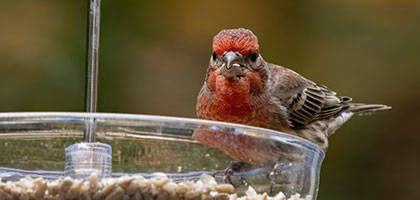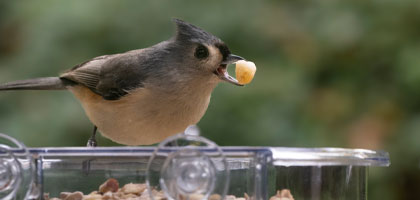Creating a yard that is friendly to cardinals can be a rewarding endeavor. It not only enhances the beauty of your outdoor space but also contributes to the conservation of these vibrant birds.
Cardinals, with their striking red plumage and melodic songs, are a delight to observe. They are non-migratory birds, meaning they appreciate a stable habitat throughout the year.
Creating a cardinal-friendly yard involves more than just setting up a bird feeder. It requires a thoughtful combination of food, shelter, and other elements that mimic their natural habitat.
This guide will walk you through the process of designing a yard that attracts and supports cardinals. We'll delve into their food preferences, the types of feeders they favor, and the shelter they need.
We'll also discuss how to maintain a cardinal-friendly environment and the role of water sources in attracting these birds.
By the end of this guide, you'll be well-equipped to transform your yard into a haven for cardinals.
Understanding Cardinal Preferences
Cardinals are known for their specific preferences in their habitats. To attract them, it's vital to understand these preferences. They thrive in environments that offer a mix of food sources, dense shrubs, and trees for shelter.
Here are some key aspects of their preferences:
- Cardinals prefer stable habitats due to their non-migratory nature.
- They enjoy seeds like sunflower seeds and safflower seeds.
- Cardinals favor quiet, secluded areas for feeding and nesting.
- They are territorial and may not share feeders well with other birds.
Providing these essentials increases the chances of attracting cardinals to your yard.
Essential Foods for Cardinals
Providing the right food is essential for attracting cardinals to your yard. A variety of food options can satisfy their dietary needs while appealing to other bird species as well. Cardinals have a preference for seeds, but they also enjoy other food types that provide needed nutrients.
Offering a mix of seeds and protein sources ensures a balanced diet. Here’s what cardinals generally love:
- Sunflower seeds
- Safflower seeds
- Cracked corn
- Mealworms
- Suet pellets
With these varied options, you can keep cardinals well-fed and returning to your yard regularly.
Seed Selection: Sunflower and More
Sunflower seeds are a favorite among cardinals due to their high oil content. Black oil sunflower seeds are particularly appealing because they are easy to crack. Safflower seeds are also popular, as cardinals find them tasty, and their thicker shells deter other birds.
Cracked corn can be another great option. Cardinals are ground feeders and will appreciate scattered corn. Offering a selection of these seeds in different feeders can attract a diverse array of birds, adding vibrancy to your yard.
Protein Sources: Mealworms and Suet Options
Cardinals also need protein-rich foods, especially during breeding seasons. Mealworms provide a natural source of protein and are easy to offer in a shallow dish. These insects can entice cardinals as well as other insect-eating species like chickadees and bluebirds.
Suet pellets, cakes, and balls offer essential fats and proteins, especially in colder months. You can place them in a suet feeder to attract not only cardinals but also woodpeckers and orioles. This variety enriches your yard, benefitting many bird species year-round.
The Role of Fresh Fruit and Nuts
Fresh fruits are an occasional treat that cardinals enjoy. Offering apple slices or berries can supplement their diet with natural sugars and vitamins. These additions can draw cardinals and provide them with a refreshing change from seeds.
Nuts like peanuts offer a protein-rich snack. Providing shelled nuts in a peanut feeder can entice cardinals alongside bluejays and squirrels. This diversity makes your yard more inviting for various wildlife, creating a dynamic ecosystem for all to enjoy.
The Right Feeders Make a Difference
Choosing the right feeders is crucial in attracting cardinals. The variety of feeders can accommodate different feeding habits and preferences. A mix of feeder types will ensure cardinals and other birds have access to the food they love.
Here are some feeders to consider:
- Seed feeders: Ideal for dispensing sunflower and safflower seeds.
- Peanut feeders: Designed for shelled and whole peanuts.
- Suet feeders: Perfect for offering suet cakes.
- Window feeders: Provide a close-up view of cardinals and their interactions.
Having the correct feeders not only attracts cardinals but enhances the overall bird-watching experience.
Types of Feeders: From Large to Window
Feeders come in a range of styles and sizes, each serving a unique purpose. Large feeders can accommodate multiple birds, making them useful for high-traffic feeding areas. A large bird feeder allows cardinals to eat alongside their mates and chicks.
On the other hand, window feeders attach directly to a window pane. These feeders offer an intimate view of cardinals feeding close by. While smaller, they are perfect for observing cardinals' vibrant plumage and behaviors right from your home.
Squirrel Proofing: Keeping Feed Secure
Squirrels and raccoons can be a nuisance, often depleting seed supplies meant for birds. Installing a squirrel proof feeder with baffle systems can mitigate this issue. These designs prevent critters from accessing the seeds, saving food for your feathered visitors.
Additionally, placing feeders away from structures can deter squirrels. By choosing feeder locations thoughtfully, cardinals and other birds can enjoy peaceful feeding. Ensuring feed security is essential for maintaining a cardinal-friendly yard that both you and the birds can appreciate.
Creating Shelter and Nesting Sites
Providing shelter is vital for attracting cardinals, offering them protection and privacy. Dense shrubbery and thickets are perfect for nesting, giving cardinals a secure environment to raise their young. Cardinals prefer natural foliage over birdhouses, though some might utilize open-front birdhouses.
To create an inviting habitat, consider these ideas:
- Dense shrubs: Plant species like dogwoods or serviceberries.
- Thickets: Provide secluded areas with native plants.
- Roosting boxes: Offer alternative nesting spaces.
- Layered landscape: Incorporate ground cover, shrubs, and trees for varied habitat.
By establishing a diverse landscape, you cater to cardinals' shelter needs, ensuring they feel at home in your yard.
Water Sources: Birdbaths and Beyond
Water is essential for cardinals, providing them with necessary hydration and a place to bathe. Shallow birdbaths are ideal, as cardinals feel more comfortable using them. Additionally, features like small fountains can attract these birds by ensuring a constant, fresh water source in your yard.
Maintaining a Cardinal-Friendly Environment
Consistency is key to keeping cardinals returning to your yard. Ensure a steady supply of food, water, and shelter all year round. Providing these essential elements will create a safe and inviting environment for cardinals and other visiting wildlife.
Regular Cleaning and Feeding
Regular maintenance is crucial for a healthy bird habitat. Clean feeders and birdbaths often to prevent disease spread. Refresh bird food and water supplies consistently to ensure they remain appealing and safe for cardinals.
Planting for Cardinals: Native Flora
Incorporating native plants can enhance your yard's appeal to cardinals. Native flora provides natural food sources and shelter options suited to local wildlife needs. This approach supports the overall ecosystem and increases cardinal attraction to your space.
Conclusion: Enjoying Your Cardinal Haven
Creating a cardinal-friendly yard enriches your outdoor experience with vibrant sights and sounds. By providing the right mix of food, shelter, and water, you'll enjoy the beauty and song of cardinals throughout the seasons. Embrace your role as a steward of this delightful ecosystem, and relish the joyful presence of these charming birds.






